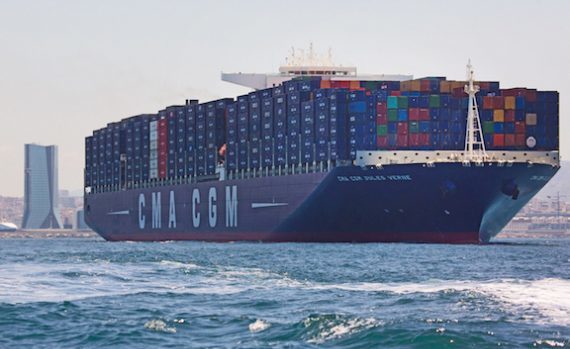Light at the end of the tunnel for container shipping

Lars Jensen from SeaIntelligence Consulting makes the case for being optimistic about the box trades.
Of course one has to be careful in concluding that the container carriers can see light at the end of the tunnel – the cheap shot would be to say it is the light of an oncoming train. However, a closer look at the industry dynamics shows that it might well be the time to slowly replace the doom-and-gloom outlook with a more constructive perspective. Hence let us take a look at why it is time to look forward.
First of all we see record low capacity growth – despite the anemic global demand growth, we are no longer adding to the overcapacity of the global markets. Global demand growth this year has been 3.5% whereas the fleet has grown 3.1%. The ordering of new large vessels has come to a complete standstill, and scrappings are picking up. If this discipline can be maintained we will slowly see the industry progress towards a more healthy balance between supply and demand. However, we should be mindful that even though 2016 is the bottom of the market, and we slowly improve from here, the climb out of the current situation will take quite a while.
We have seen substantial developments in terms of much needed industry consolidation. Many main players have either disappeared as independent carriers or are about to disappear. Additionally, the main deepsea trades will be handled by three alliances rather than four from spring 2017. Whilst this in itself does not change the supply/demand situation, it does provide a foundation for more long-term stability.
We are increasingly seeing carriers begin to embrace much needed tools such as revenue management, digitisation, automation and process optimisation. This should be seen as a shift from the pure cost-cutting focus of the past years. Whilst clearly these new tools provide much needed cost reductions if implemented correctly, they can also provide the carriers with a platform for a more fundamental change in business models. A change where we gradually see a refocusing on revenue growth and service differentiation.
Hence if we look slightly beyond the immediate problems facing the carriers, there is indeed reason for cautious optimism. However, this must take into consideration a range of risk factors as well which could prove lethal to some carriers. Most notable amongst these risks we find the possible continuation of freight rate wars when the new alliances begin to assert themselves, the risk of sudden ordering of large vessels driven by shipyards’ need to fill their empty orderbooks and failure to implement the IT systems and processes necessary for the digitisation and automation. For the carriers, a lesser is perhaps the new companies emerging from the technology sector. Despite some of these being relatively aggressive in terms of their drive to disrupt the industry, they are much more likely to provide a path to much needed innovation for the beleaguered carriers. And that outside innovation might be a welcome change can be seen from the fact that out of the 50 largest container lines in operation today, only one new carrier has emerged within the last 10 years.
This article first appeared in the just published latest issue of Maritime CEO magazine. Splash readers can access the full magazine for free online by clicking here.

Reading through this, with adding up all the necesssary fundamentals to improve the situation of the industry and dividing it through the “whens” and “buts” in the latter part of the article – I rather bet on the approaching train!!